-
Posts
22 -
Joined
-
Last visited
Content Type
Profiles
Forums
Articles
Gallery
Downloads
Events
Posts posted by TToch
-
-
7 hours ago, fordguy_85 said:
I could be wrong, but to me it kinda looks like decarburization...
I keep trying to edit my comment, but the changes won't save. What I meant to say was no MAJOR decarburization has occurred. From what I understand there will almost always be small amounts of carbon loss in the surface.
-
8 hours ago, jcornell said:6 hours ago, fordguy_85 said:
I could be wrong, but to me it kinda looks like decarburization...
I don't believe it is, I am extremely careful during the heat treating process as I've found out it can make of break a blade. From what I understand (I'm still somewhat new to knife making) decarburization is the process of steel losing carbon due to excessively high temperatures, correct? If so, then no decarburization has occured, I try very hard to get my knives as close as I can to optimal temperature (with the minimal equipment I have) before quenching. And if there is another way decarburization can occur, I would love to know about it!
3 hours ago, Frosty said:Big improvement T. Don't stop working at the anvil while you develop your grinder skills. There isn't the frustration learning both skills at the same time if you're not trying to combine them at the same time. If that makes sense.
 If not, it's true anyway.
If not, it's true anyway. 
Good job, carry on.
Frosty The Lucky.
I understand, maybe I'll try to get back into this weekend, thanks!
-
Just now, jcornell said:
Okay, thanks. Good to know.
Yep, no problem!
-
1 minute ago, jcornell said:
Okay, I'll bite - if you're doing stock removal, how do you get scale pattern?
When I heat treat my knives, I use a coal forge to bring them up to critical temperature for the quench (in canola oil). The knife gets this pattern from the thin layer of scale that develops while its heating. I've experimented with it a little bit and this pattern can pretty much be erased if you just brush the scale off right before the quench, but I like it so I keep it!
-
3 minutes ago, Jonah k said:
Nice blade shapes and I like the polished mill scale finish! Have you given up on forging or just taking a hiatus.
As of right now, I'm going to stick to stock removal. I just find the process a little bit more enjoyable, but I might go back to forging once I get more experience. And yeah I really like the look of the scale pattern, makes each knife unique!
-
Hello everyone, I wanted to show you all what I've been working on for the past couple of days. As I explained to another member, when I first joined this website I had posted a couple pictures of knives I forged from rebar, and I received a lot of critical feedback. Taking some time off I decided to heed their advice and purchase some good steel (1084) and begin making knives through stock removal. The first picture are my old knives and the other two pictures are of my new knives (which still aren't completely finished). I'd love to hear what you all think of them!
(All of the knives are about the same size... Roughly 7 inches long, all 1084, with varying handle material) I am no longer in possession of the Bowie, as it was a gift for a friend.
I intentially left the rough finish on all of the blades as I think it adds character, just a personal preference.
-
UPDATE: I just bought the drill for $75 and it works awesome. Buying used is definitely the way to go
-
-
After several attempts of drilling straight holes through my knives (with a hand drill) I've decided that I need a drill press. Lining up the pins can be kind of tedious and I just need more precision. My budget is $130. Anyone have any recommendations? There are so many to chose from and I think it would be best to hear your personal suggestions and experiences.
-
I really appreciate all the replies. I think this will probably be my next purchase, since it seems like the best choice for my budget. I'm just eager to upgrade since it takes forever to produce anything with my current set up.
-
1 hour ago, TwistedCustoms said:
I bought a Kalamazoo 2x48 a year ago from Jantz and I love it. You can get the 2x48 without a motor for less than 300.00
I put a 2hp 1725rpm motor on it and have been running Norton Blaze belts. I'm thrilled for the money I spent. I narrowed my choices down to the Kalamazoo or the Grizzly. The Grizzly is China made and the Kalamazoo is US made. For the same money I went with US and I've been very happy with it. I don't know there whole product line and they may be making some stuff offshore but my 2x48 was made in Michigan. Yoe will have to hit a scrap yard to look for a motor with a v belt pully but if you burn up a motor you can drop another one in. I think I paid 20.00 for my 2 HP at a flea market. If your planning on making deep plunge cuts you will have to make a new platten. The factory platten wasn't designed with knife makers in mind but the machine is solid and tracks great.
Sounds pretty nice! Sadly I'm working with files and a harbor freight 4x36 belt grinder, not exactly the best tools to make knives with. Pretty much any belt grinder would work better than what I have now. Did you order yours offline?
-
Thanks for the response, you definitely gave me a lot to consider. I'll probably just wait and buy a proper grinder once I have the money, I'm sure the wait will be worth it.
-
I'm looking for a decent belt grinder, but I'm on a $350 budget (leaving me with little to choose from). I was searching around on the Internet and I came across these Kalamazoo grinders; does anybody own/use one of these? They're kind of obscure, I haven't seen a lot of people review them or mention them in the forums. I was curious to see if they are of decent quality or if they should be avoided. Thanks
-
Alright, thank you
-
Well to give a little bit of background on myself, the most formal experience I've had with metal working is from a metal shop class in highschool, other than that I've gained most of my knowledge through watching videos on the Internet and reading forum posts like these. In regards to blade making I'm familiar with the technique to produce the shape as this was the main thing we focused on in class, but I lack experience when it comes to quenching and the actual composition of the metal. For a beginner, what steel would you guys suggest working with?
-
I'll have to look into it. From what I've gathered it seems like everyone has different opinions as to what oil you should be using, but it seems like the oil you mentioned is the best, or close to it. I appreciate all the responses everyone!
-
6 hours ago, kayakersteve said:
Might be nice to know the type of steels/alloys you are working with to give more informed answer to your question
I will eventually be working with 1095
-
17 hours ago, Frosty said:
Thanks, I'm really enjoy this website! There are so many friendly people and tons of different things to read about. I really appreciate the quick response and I'll definitely consider using my location. I just wanted to make sure I'm using the proper stuff for quenching, considering it's probably the most important part of the knife making process.
-
I am relatively new to blade smithing and I wanted to share my first set of knives. Considering I am completely self taught, I think they've turned our fairly well despite being made of rebar and not having proper handles. I am completely open to criticism and willing to take any advice I can get (areas where improvement is needed, specifically on the blade itself). I apologize for the low quality pictures and poor lighting...

-
Hello, I am new to the forums and blade smithing as a whole, ⎌and I have a few questions. When I first started forging knives I was quenching them in used motor oil (which, from what I've read is horrible) and I have now switched over to canola oil. Was this a wise choice? Or is there another type of oil I should be using? (I don't have a lot of money for professional quenching oil and I'm currently working with junkyard metal like rebar, etc). I'm sure these questions have been beaten to death, but any advice is greatly appreciated, thanks!

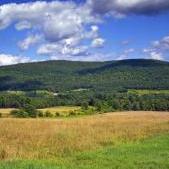
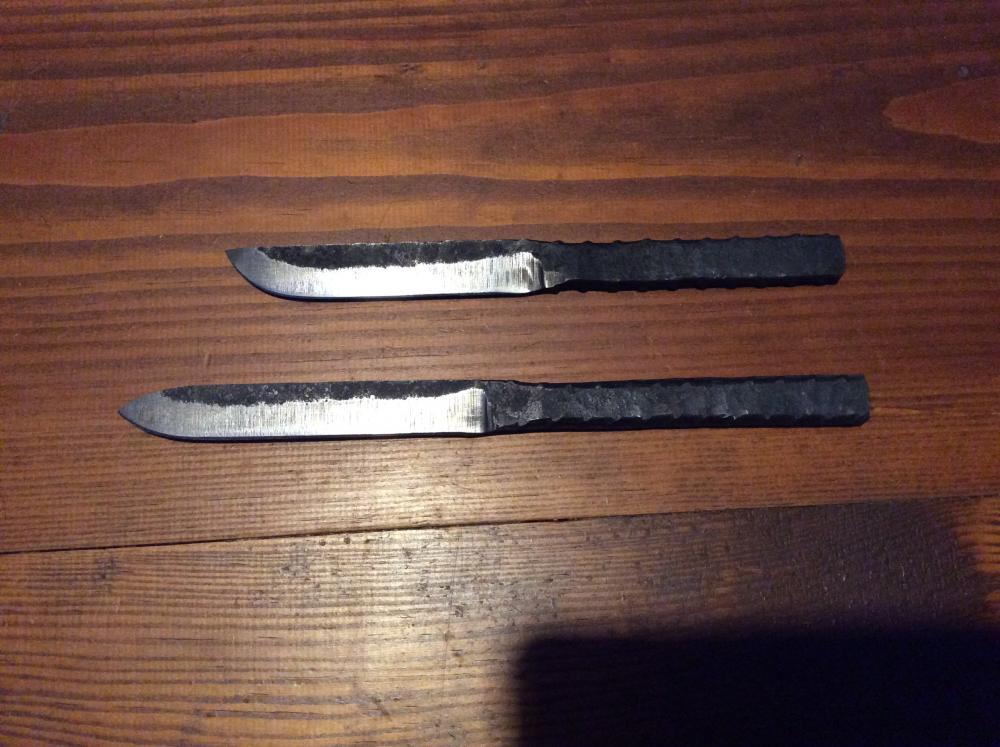
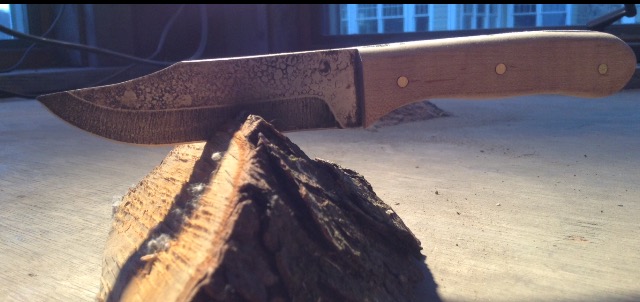
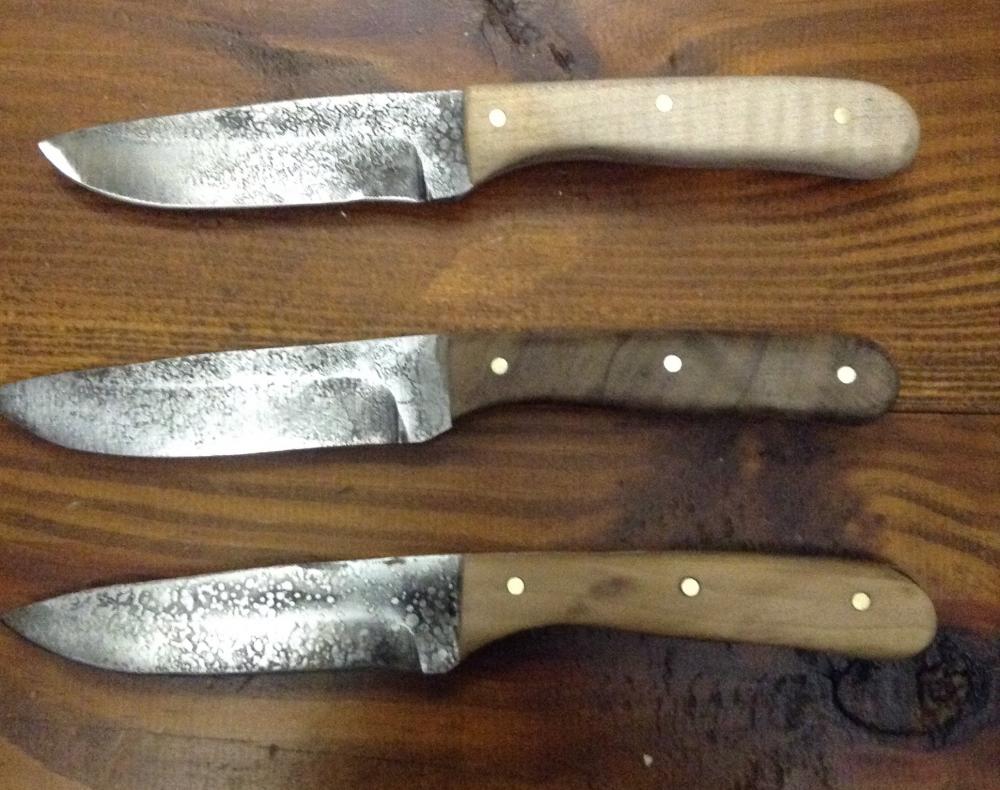
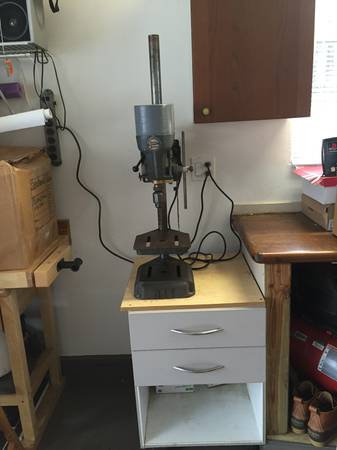
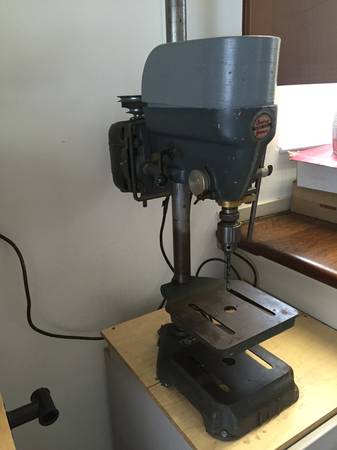
Sharing my Work (Old and New)
in Knife Making
Posted
Thank you! I'm sure that some decarbonization has occurred, but not to the extent that it would effect the quality of the blade. I'm sure if I had a more controlled environment (gas forge or an even-heat oven) the pattern would almost be nonexistent.